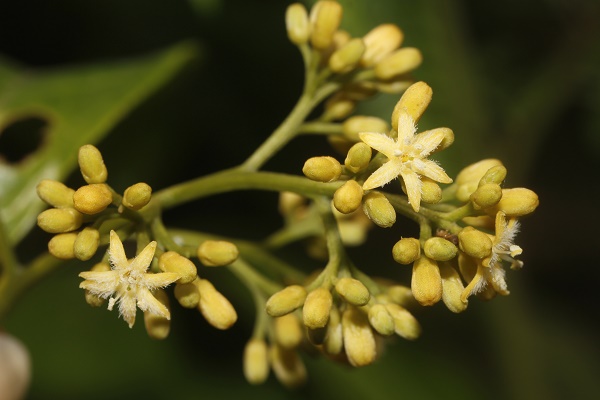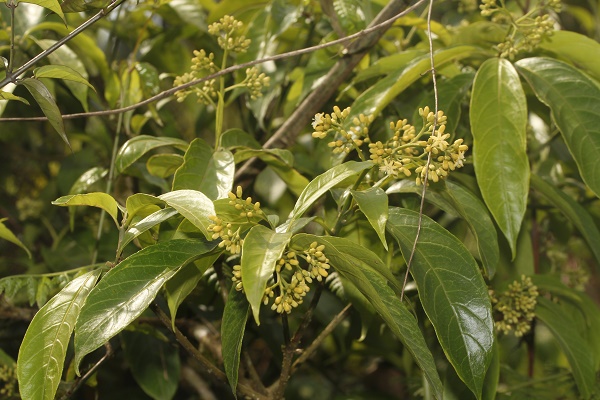Nothapodytes is a small genus of evergreen or deciduous trees in the family Icacinaceae, with about eight to eleven species, distributed throughout the tropics and subtropics of Asia.
During the botanical survey in Putao, Kachin State, Myanmar, in 2017, researchers from Xishuangbanna Tropical Botanical Garden (XTBG) collected an unknown species of Nothapodytes . It belongs to Nothapodytes because its distinctive lorate hairy petals are connated at the base, and the fleshy foliaceous disk is divided into five leaf-like lobes.
The researchers named it as Nothapodytes burmanica to refer to its type locality in northern Myanmar and got it published in Nordic Journal of Botany.
Morphological and phylogenetic evidence indicates that it is close to N. pittosporoides. Phylogenetic results indicate that N. burmanica is deeply nested within the genus and forms a sister group of N. pittosporoides.
Morphologically,Nothapodytes burmanica is a shrub of 1.5–3.0 meters tall. It is similar to Nothapodytes pittosporoides in having sparsely hairy, oblong, or oblanceolate leaves, but differing from it by leaf bases usually oblique, and with a paniculate inflorescence with more numerous but smaller flowers with shorter petals.
Nothapodytes burmanica is known only from its type locality, Putao, Kachin State, Myanmar. It grows along the margins of dense forests and roadside slopes. It is one of the many new species found in richly biodiverse Myanmar by researchers from Chinese Academy of Sciences (CAS) in recent years.
"During 2014–2019, nine China–Myanmar joint scientific expeditions on biodiversity led by Southeast Asia Biodiversity Research Institute of the Chinese Academy of Sciences (CAS-SEABRI) made significant progress, and the overall contribution of new species of Myanmar plants published by SEABRI in 2017–2020 has been nearly 50%, which implies that SEABRI is one of the leading avenues for the discovery of new species in Myanmar,” said TAN Yunhong of XTBG.
Contact
TAN Yunhong Principal Investigator
Center for Integrative Conservation, Xishuangbanna Tropical Botanical Garden, Chinese Academy of Sciences, Menglun, Mengla, Yunnan 666303, China
E-mail: tyh@xtbg.org.cn
First published: 11 January 2024

Nothapodytes burmanica (Image by TAN Yunhong)

Nothapodytes burmanica (Image by TAN Yunhong)

Nothapodytes burmanica (Image by TAN Yunhong)

Nothapodytes burmanica (Image by TAN Yunhong)




